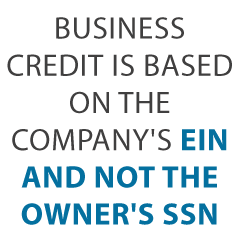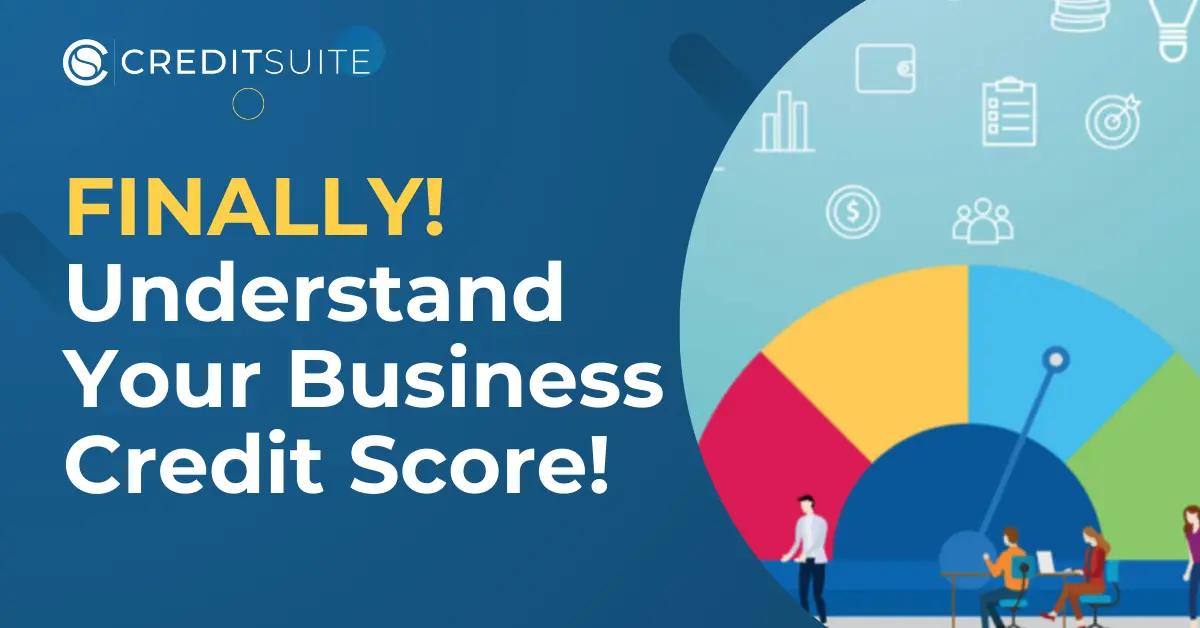What Does Your Business Credit Card Score Mean, and Where Does it Come From?
 Imagine you are in a foreign country and have no understanding of the local language. Of course, you need the basic things such as food, water, and shelter just to survive. The problem is, you cannot ask anyone where to find them. Consequently, each time you try to get these things for yourself the door is shut in your face. You cannot explain yourself in order to get what you need, because you do not speak the language. Even if they did try to help you, you would have no clue what they were talking about. You wouldn’t understand. This what it is like when you do not understand your business credit card score.
Imagine you are in a foreign country and have no understanding of the local language. Of course, you need the basic things such as food, water, and shelter just to survive. The problem is, you cannot ask anyone where to find them. Consequently, each time you try to get these things for yourself the door is shut in your face. You cannot explain yourself in order to get what you need, because you do not speak the language. Even if they did try to help you, you would have no clue what they were talking about. You wouldn’t understand. This what it is like when you do not understand your business credit card score.
Similarly, you need funding for your business to survive. A bad business credit card score can keep you from getting it. If you do not understand your score however, you cannot help yourself.
For this reason, you need to know what the score means, what it says about your business, and how it is calculated. Once you understand these things, you can get to work correcting whatever barrier is in the way.
Where Does Your Business Credit Card Score Come from and What Does it Mean?
The truth is, it depends. As you likely know, there are various agencies that report personal credit scores. Likewise, there are several that report business credit scores as well. Most noteworthy are Dun & Bradstreet, Experian, Equifax, and CreditSafe. There are a few smaller, lesser known business CRAs. Certainly however, these are by far the largest and most commonly used by lenders.
That’s the easy part. Where your business credit card score comes from and what it means is a little more complicated. First of all, there are a ton of different scores. Also, different CRAs gather their information and calculate their scores differently. As a result, seeing your business credit card score can be very difficult.
Understanding it can be even harder. Below, we break down what each score means and where the information comes from for each of the major credit reporting agencies.
Business Credit Card Score from Dun & Bradstreet
Dun & Bradstreet offers several different types of business credit reports. In fact, there are six different reporting options in all. They all offer different information related to credit worthiness. The result is, it takes all of them to get the whole picture.
The report lenders use most is likely the PAYDEX. This is probably because it is the easiest to understand, due to it being the most like the consumer FICO score. It measures how quickly a customer makes payments and ranges from 1 to 100. Scores of 70 or higher are acceptable. For reference, a score of 100 shows payments are made in advance. A score of 1 indicates that they are 120, or more, late.
The other Dun & Bradstreet Credit Reports include:
Dun and Bradstreet Delinquency Predictor Score
The delinquency predictor score measures how likely it is that the company will not pay, will be late paying, or will fall into bankruptcy. On a scale of 1 to 5, a 2 is good.
Financial Stress Score
The financial stress score measures pressure on the balance sheet. Therefore, it shows how likely the company is to shut down within a year. These scores range from 5 to 1. A score of 2 is good.
Supplier Evaluation Risk Rating
This rating ranks the odds of a company surviving 12 months. The minimum score is a 9 and the maximum is 1. A good score is 5.
Credit Limit Recommendation
The credit limit recommendation reflects a business’s borrowing capacity. Even more, it is a recommendation for how much debt a company can handle. Typically, creditors use this to determine how much credit to extend.
D&B Credit Rating
This one ranks overall business risk on a scale of one to four. A score of 2 is good. The rating is given in conjunction with letters, the combination of which indicate a company’s net worth.
Even if there isn’t enough information on a business to assign a regular rating, Dun and Bradstreet will assign what they call a Credit Appraisal Score. Due to the lack of information, this is based on number of employees. Alternatively, they may offer a rating based on what data is actually available.
Business Credit Card Score from Experian Commercial
Experian uses what it calls Intelliscore as its credit ranking. There are more than 800 different factors that they use to predict a company’s credit risk. With Intelliscore, a score of 76 or higher indicates a low risk of default or late payment. If a score falls between 51 to 75, it indicates a low to medium risk. Scores from 26 to 50 are medium risk. Finally, from 25 down to 1 is medium high to high risk.
Experian offers a number of other scores also.
Intelliscore Plus
This is a highly predictive percentile score that indicates the likelihood that a business will go seriously delinquent, or have a major financial issue such as a bankruptcy within the next year.
Intelliscore Plus uses more factors to determine the score than the original Intelliscore. While payment history still accounts for 5 to 10%, current payment status, trade balances, and percent of accounts delinquent make up 50 to 60% of the score. Credit utilization, company profile, age of the business, industry risk, and public records account for the rest. Public records include:
- liens
- judgements
- collections
- bankruptcies
- other derogatory items
Data comes from suppliers, lenders, legal filings, collection agencies, credit card companies, and of course public records.
The Experian Financial Stability Risk Score (FSR)
FSR predicts the potential of a business going bankrupt or defaulting on its obligations. The score identifies the highest risk businesses by making use of payment and public records. These records include high utilization of credit lines, severely delinquent payments, tax liens, judgments, collection accounts, risk industries, length of time in business, etc.
Experian’s Blended Score
This is a one-page report that provides a summary of the business and its owner. A combined business-owner credit scoring model is more comprehensive than a business or consumer only model. Blended scores have been found to outperform consumer or business alone by 10 – 20%.
Equifax Business
Equifax gets its business credit data in ways similar to D&B and Experian. Like D&B, they also have a sharing agreement with the Small Business Finance Exchange. In addition, they get Net 30 type industry trade credit information from a wide variety of suppliers that provide products and services to businesses on an invoice basis.
They combine financial data with industry trade data, and they add in utility and telephone payment data. They also use public records information.
Equifax Business credit scores include:
The Small Business Credit Risk Score for Suppliers
It is scored on a scale of 1 to 100, with 90+ indicating that a business has paid its obligations as agreed. An 80 to 89 means they are 1 to 30 days past due, 60 to 79 indicates they are 31-60 days overdue, and a score of 40 to 59 is 61 to 90 days past the payment date. In the same way, It just goes down further from this point.
Business Failure Risk Score
This score indicates the chance of a company paying its bills late on the following scale:
- 497 – 816: 25% or less chance of payment being late
- 452 – 496: 26 – 50% chance of late payment
- 415 – 451: 51 – 74% chance of late payments
- 101 – 414: 75 – 100% chance of late payments
Public Records Report
The purpose of this report is to list bankruptcies, judgments, and liens along with the amount, date of the most recent filing, and how they were satisfied.
Credit Usage Report
This is a pie chart that shows your company’s credit usage. It gives a visual of what percent of your available credit you are using. That is known as your credit utilization ratio, and it has a pretty big impact on your overall credit score.
Credit Report Summary
The summary report shows the number of your business’s credit accounts, as well as the date each one became active. It also lists any amounts past due, along with your most severe status of the past 24 months.
The highest amount of credit extended, the median balance, and the average open balance are included as well.
Additionally, the report lists recent activity such as number of new accounts opened recently, delinquent accounts, number of updated accounts, and inquiries.
Financial Account Highlights
This report shows details for the past 36 months, including credit accounts and leases. It lists the status, open and close dates, and original and current credit limits. It also shows any past due amount for each. In addition, the payment amount and frequency for each account, as well as its security status can be seen.
Business Credit Card Score: Credit Safe
CreditSafe does not gather its own information like the other CRAs. Rather, they offer reporting options based on data from Dun & Bradstreet. Since they compile the data and report it in different ways, these scores still offer information that may be used differently than what is found on a Dun & Bradstreet report.
They offer 3 packages: Standard, Plus, and Premier. The problem is, they do not list their prices on the website. You have to request a quote to determine what your pricing would be, as they allow you to purchase individual products as well.
Their main score, the CreditSafe rating, works on a scale of 1-100. It predicts the likelihood that payment performance will become 90 plus days past due within the next 12 months, or that the business will go bankrupt. They offer a variety of other scores and reports that provide a ton of additional information.
International Score
This score is derived from the Creditsafe rating. It compares credit risk between companies in different countries.
Credit Limit
The Creditsafe recommended credit limit uses information from the business payment records and those of similar companies to calculate a dollar amount recommendation for the maximum amount of credit a company should receive at one time.
Days Beyond Terms (DBT)
Compares how many days late a business pays its bills in comparison to other companies in the industry.
Derogatory Legal
This is a report on the number and value of tax liens and judgements that have been filed in the past 6 years and 9 months. It also includes bankruptcies filed in the last 9 years and 9 months.
Payment Trend
A report designed to highlight, at a glance, substantial changes in how a company is paying its bills.
Business Spend Trend
Let’s you know whether the total annual business spending is going up or down when compared to the previous year.
Subscription packages come in levels, and the prices are dependent completely on your business’s individual needs. You have to speak to a consultant to get a quote.
Finally! You Understand Your Business Credit Card Score… Now How Can You See It?
Just understanding your business credit card score is not enough. You need to know what you can do about it if it isn’t helping you get funding. That’s where monitoring comes in. Unfortunately, you cannot get a free copy of your business credit reports like you can with your personal credit reports. It costs money to see your business credit card score.
For example, the big three charge closet to $50 or more for each report:
- Dun & Bradstreet reports range in price from $61 to $229 per report.
- Experian reports are $49.95 per report.
- Equifax is $99.95 per report.
CreditSafe doesn’t even tell you a price until you talk to one of their agents. They will quote you a price after discussing your needs with you. So it’s a subscription type package that you pay monthly.
You can monitor your credit with D&B, Experian, and CreditSafe at a fraction of these costs by going to https://www.creditsuite.com/monitoring/.
What Can You Do About Bad Business Credit?
First off, if your business credit card score is bad because of mistakes, you can dispute them. In this way, you can have the mistakes taken off. Do this in writing to the credit reporting agency. In addition, you will need to include backup documentation that supports your point. Do not send originals however. Rather, send copies.
In contrast, if your credit is bad and there are no mistakes, start now making payments on time. Furthermore, if you have accounts that do not report to the credit agencies, such as telephone or utility accounts, ask them to report your on-time payments.
If you pay rent, ask your landlord to report your rent payments. In addition, work with starter vendors that will offer net 30 invoices without a credit check and that will report your payments. Go here to find a few to start with.
Above all, pay your bills on time. This is the number one way to increase your business credit score.
Knowledge is Power
Once you understand your business credit card score, you can start to figure out what you can do about it. So knowing is half the battle. The other half is getting the problem areas corrected. Once you do, your business can get the funding it needs to grow and thrive.


